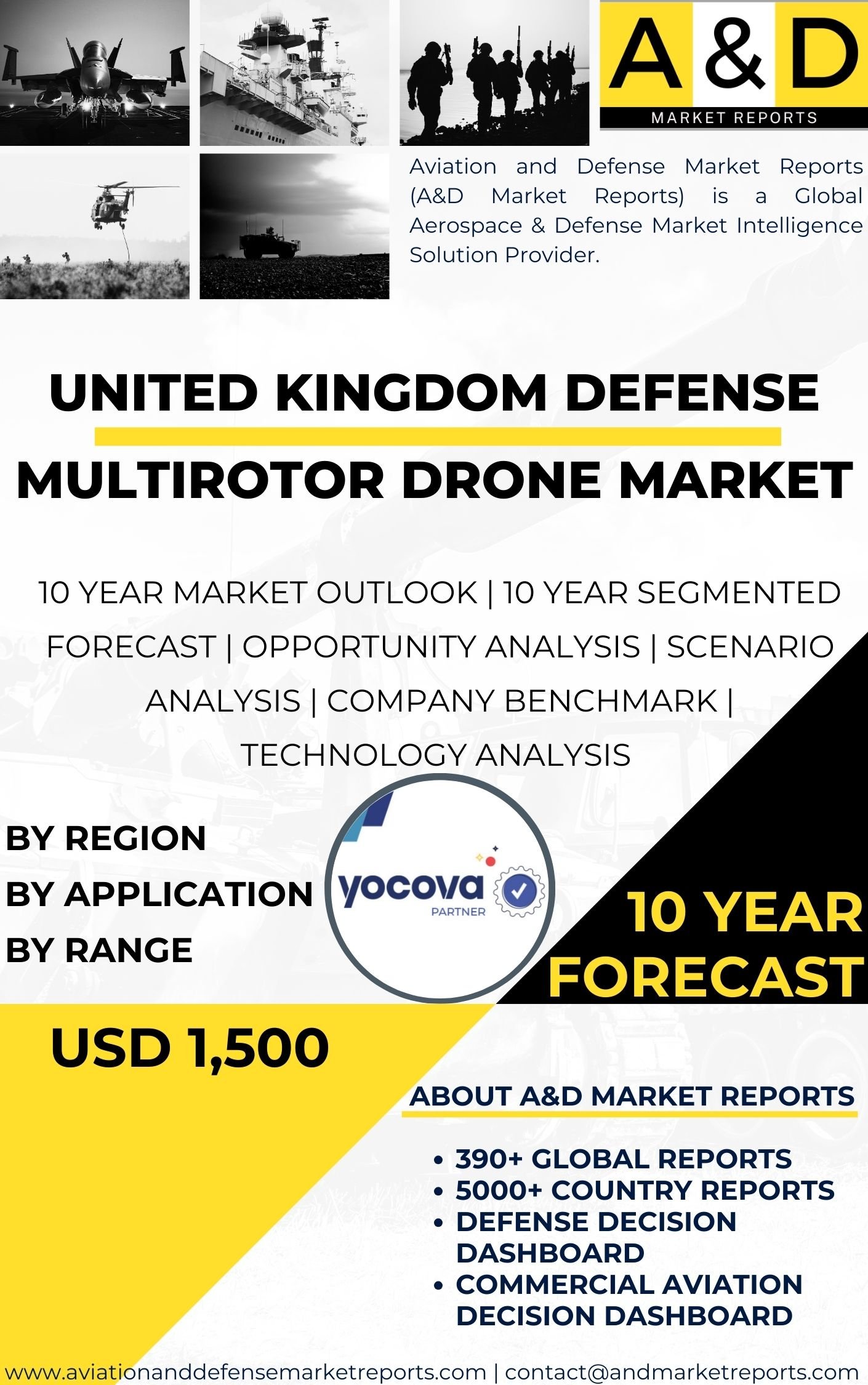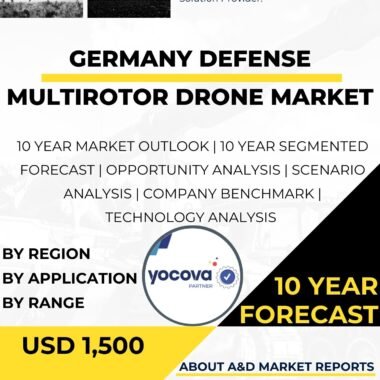Description
The UK defense multirotor drone market is a dynamic and rapidly growing sector that plays a critical role in enhancing the country’s military capabilities. Multirotor drones, also known as quadcopters or UAVs (Unmanned Aerial Vehicles), are unmanned aerial systems that use multiple rotors to achieve vertical takeoff and landing, as well as agile flight capabilities. These versatile and agile platforms have become increasingly valuable in a wide range of defense applications, offering surveillance, reconnaissance, intelligence gathering, and other mission-critical capabilities to support military operations.
One of the primary areas of focus in the UK defense multirotor drone market is intelligence, surveillance, and reconnaissance (ISR). Multirotor drones equipped with high-resolution cameras, sensors, and communication systems enable real-time monitoring of critical areas, providing valuable situational awareness to military personnel. These drones can be deployed for border surveillance, coastal monitoring, and supporting ground troops during various military operations.
Moreover, the UK defense multirotor drone market addresses the use of drones in search and rescue operations. Multirotor drones equipped with thermal imaging cameras and communication equipment are instrumental in locating and assisting individuals in distress, such as during maritime rescue missions or in hazardous environments.
Furthermore, the defense multirotor drone market in the UK encompasses the use of drones for electronic warfare (EW) capabilities. These drones can be used to disrupt enemy communication systems, identify and counter hostile electronic threats, and gather intelligence on enemy electronic signatures.
The integration of multirotor drones into the UK’s defense market has also been driven by their role in supporting military training exercises. These drones serve as cost-effective and realistic platforms to simulate various scenarios, allowing military personnel to enhance their skills and improve coordination and tactics in a safe and controlled environment.
Additionally, the defense multirotor drone market in the UK addresses the development of specialized drones for hazardous tasks, such as chemical, biological, radiological, and nuclear (CBRN) detection. Multirotor drones can be equipped with sensors to detect hazardous substances and assess potentially dangerous environments without putting human personnel at risk.
The use of multirotor drones in urban warfare scenarios is another significant aspect of the UK defense market. These drones can navigate complex urban environments, providing vital intelligence to military forces engaged in urban operations and improving situational awareness in challenging settings.
The UK defense multirotor drone market is characterized by continuous innovation and advancements in technology. Drones are becoming increasingly sophisticated, with improved endurance, longer flight ranges, and enhanced payloads. Advancements in miniaturization, sensor technologies, and data processing capabilities contribute to the growing capabilities of these aerial systems.
Moreover, the defense multirotor drone market in the UK is influenced by the integration of artificial intelligence (AI) and autonomous capabilities. AI-powered drones can analyze data in real-time, make informed decisions during missions, and even execute tasks autonomously, reducing the need for direct human control in certain scenarios.
The defense multirotor drone market in the UK is not without challenges. One significant concern is the need to address cybersecurity threats to drone systems. As drones become more interconnected and reliant on data networks, they become susceptible to cyber-attacks and unauthorized access. Robust cybersecurity measures are essential to safeguard sensitive information and protect drones from potential security breaches.
Furthermore, the UK defense multirotor drone market must address airspace management and regulatory challenges. Integrating drones into civilian airspace requires careful coordination with civil aviation authorities and the implementation of appropriate safety protocols to avoid collisions with other aircraft.
Moreover, the deployment of multirotor drones in military operations also raises ethical and legal considerations. Ensuring compliance with international laws and regulations, as well as safeguarding civilian populations during drone operations, remains a critical aspect of the defense multirotor drone market in the UK.
In conclusion, the United Kingdom’s defense multirotor drone market is a dynamic and rapidly evolving sector that offers a wide range of capabilities to enhance the country’s military operations. Multirotor drones have proven invaluable in intelligence, surveillance, reconnaissance, search and rescue, electronic warfare, training, hazardous tasks, and urban warfare scenarios. Continuous research, development, and innovation are vital to address challenges and harness the full potential of multirotor drones to support and strengthen the UK’s defense capabilities in the future.




